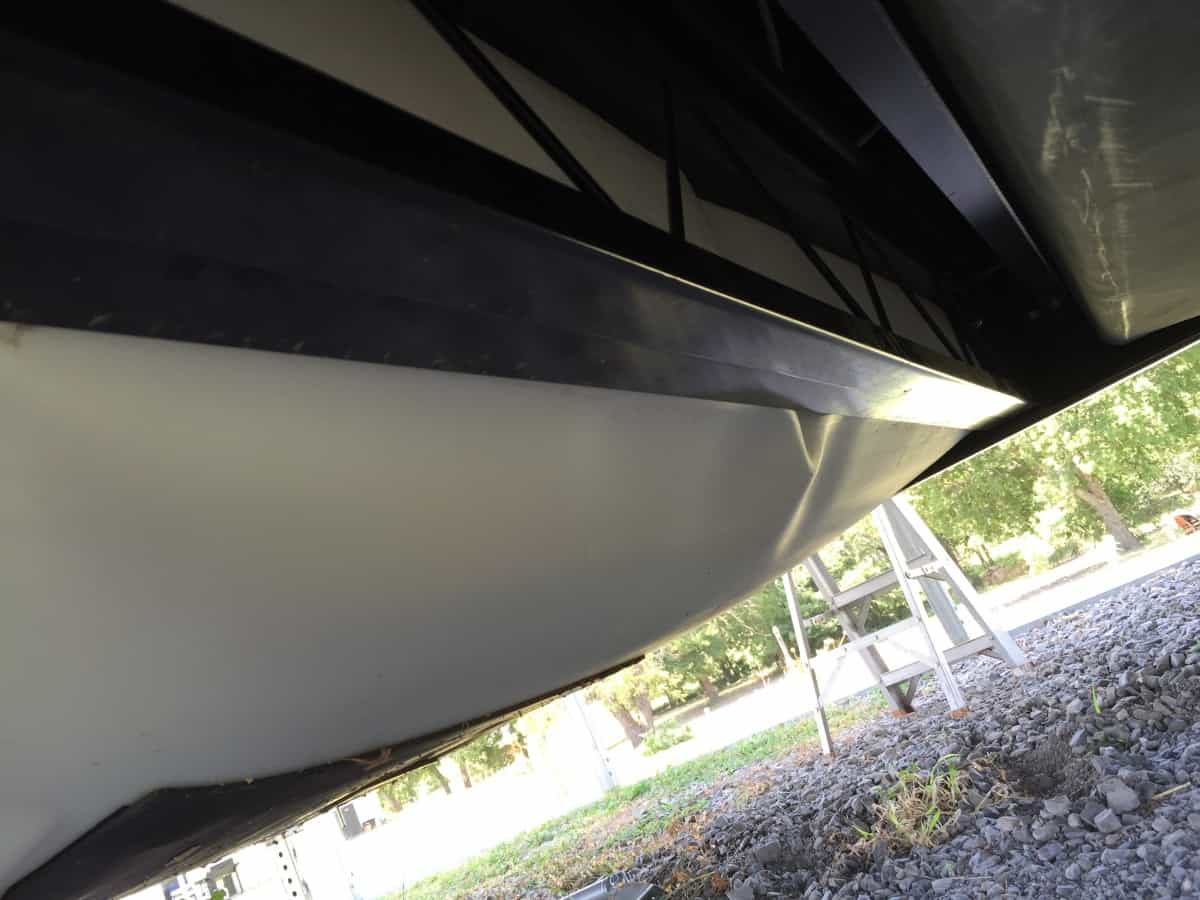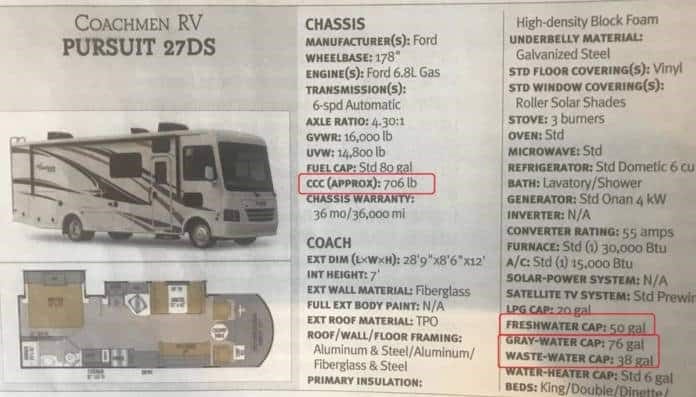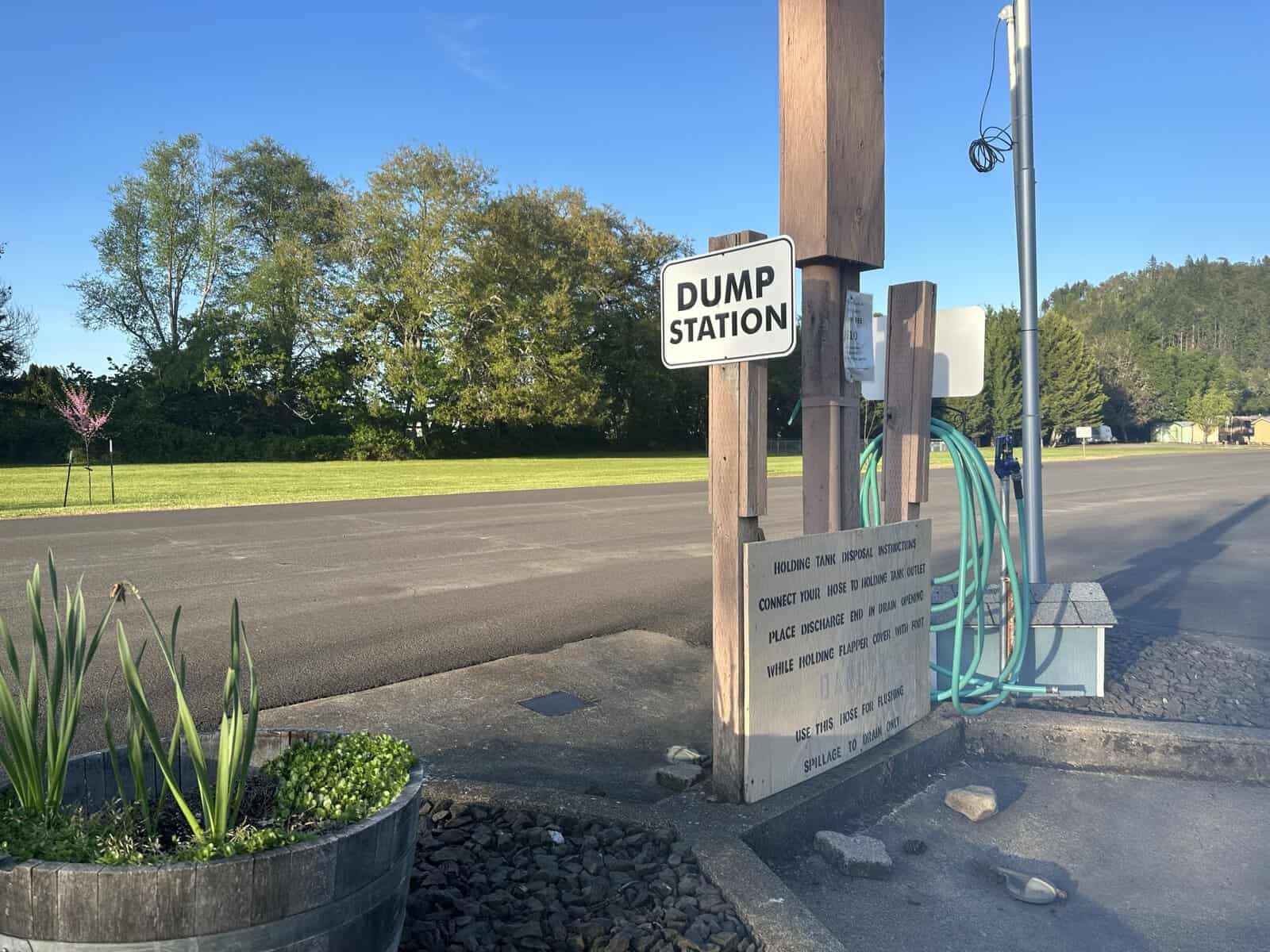The popular RVer debate of “Should you RV with full water tanks?” pops up quite often on RV forums and social media.
This question about driving with a full RV fresh water tank (and waste water tanks too) is debated among new and old RVers nearly as much as “Should you travel with RV propane turned on?”
Like many things about our lifestyle, you will find staunch supporters on each side of this RV debate.
Where do you stand?
In this article, we will discuss when you should and should not drive an RV with full water tanks. And if you do it, learn how to drive your RV safely when hauling water.
Pros and Cons of Driving an RV with Full Water Tanks
Both sides of the “Should you RV with a full water tank?” debate have valid points.
Full water tanks add considerable weight and impact ball weight, towing ease and fuel economy. However, travelling with empty water tanks is risky, especially if you don’t know for sure that you will be able to fill up at your destination. You certainly can’t afford to be without water when heading into remote areas.
“What You Need to Know About Your Water Weight When Towing a Caravan.” CAMEC Caravan Appliances, Parts, and Accessories
But which side is right? Let’s look at some of the most common points of discussion.
Why You Should NOT RV with Full Water Tanks
First, consider that one gallon of water weighs about 8.34 pounds (3.78 kilograms). RVing with the added weight of a full fresh water tank can be detrimental in the following ways.

Of course there are many sides to every RV debate. Believe it or not, there are some times when you should drive RVs with full water tank.
Here’s an example of how driving an RV with full water tanks can impact a motorhome’s Cargo Carrying Capacity (CCC) rating.

When you SHOULD have a full RV water tank while driving.
Another Reason To Avoid RV Driving with Full Water Tanks
For years, this debate was pretty much limited to “Should you or shouldn’t you drive RVs with full water tanks?” Sadly, in recent years, a new issue has emerged as to why you shouldn’t RV with a full tank of fresh water.
The fresh water tank might fall out.

RV manufactures are telling RV owners not to travel with freshwater in their tanks in the RV plumbing section of their user manuals.
TFR (The Forest River) owners manual recommends not towing with a full FW tank.
“Towing with a full water tank: yes/no?” @Traveling_Circus, Forest River Forums
Is there a right answer? Here is my opinion on the RV driving with full water tanks debate.
The Real Question is: “How much water should I travel with in my RV tank?”
As someone who enjoys the mountains and tows a travel trailer with a half-ton truck, I let common sense dictate if I RV with full water tanks (or a slightly lesser amount).
I carry a partially full water tank for traveling to campgrounds with hookups.
If we go camping where there is a city water hookup at our campsite, I travel with just a days’ worth of fresh water. One days’ worth of water allows us to use the RV bathroom and kitchen along the way. It also provides water in the event the city water is not immediately available at our campsite due to unforeseeable circumstances. In a scenario like this, a days’ worth of water onboard gives us a chance to figure out a Plan B rather than scrambling to find water upon arrival.
I will RV with full water tanks when heading out to boondock.
Since my wife and I enjoy dry camping, having a sufficient supply of water is essential to our camping enjoyment.
- When we head out dry camping close to home, I carry enough water for the number of days we plan to camp, plus an extra days’ worth in the event we are delayed going or coming for some reason.
- When we take extended boondocking trips far from home. Not only are we loaded up with a week or two worth of groceries and clothes, but we also have a motorcycle and ATV in the bed of the truck.
In this situation, I don’t like to make my poor half-ton truck carry any more additional weight than necessary. Instead, I carry enough water to get us down the road two or three days before refilling. As we near our boondocking location, I fill my 60 gallon fresh water tank, as well as a portable 5 gallon water jug (or two).
Before You Ever RV with Full Water Tanks, Inspect Your RV Underbelly First!
Unfortunately, about three summers ago, I had a personal experience learning about water tanks falling out. This happened after filling my water tank to the brim prior to heading into the boondocks. That incident spawned my article “Is Your RV Water Tank in Danger of Falling Out?“
The RV water tank falling out is a common occurrence with towable RVs.
The freshwater tank on my 2015 Wildcat “pooched” down between its too light metal frame – not while I was towing with it full of water but in my yard when I filled it to sanitize my system. I shored it up with wooden fence pickets before my upcoming trip to the Goshen rally and Wildcat techs redid my work there. 5picker is right. You must get eyes on it yourself. I wouldn’t trust a printed document nor anyone’s word.
“Traveling with a Full Fresh Water Tank,” @Mr. Dan, Forest River Forums
This is why I encourage you to do RV underbelly care.
Crawl under your camper to inspect the underbelly, along with the underfloor water tank, if so equipped.
Once you verify that your below floor RV freshwater tank is not in danger of falling out, what are the other considerations of RVing with a full water tank?
What About RVing with Full Water Tanks on Steep Grades?
Once I was RVing over Towne Pass (CA 190), listed on the dangerous roads website. It’s the only paved road connecting the heart of Death Valley to Panamint Valley and Highway 395 in the west.
Panamint Valley offers unlimited off-grid boondocking and plenty of side canyons to explore. However, the RV parks in Death Valley are nowhere near this area. The only places with a fresh water spigot are off the route. The only reasonable option is to fill up on water in Death Valley’s Furnace Creek area, then transport it up and over Towne Pass.
Thankfully, my tow vehicle has little problem heading up the steep grade with a full tank of water in the RV, along with an ATV and motorcycle in the back.
Be Aware of Your RV’s Limitations
For me, the problem of RVing with full water tanks lies in descending the 9-mile long, 9% grade with curves to reach the floor of the Panamint Valley on the other side of the pass.
In a case like this, you must be fully aware of the limitations of your rig and act accordingly.
For my RV, it means downshifting into first or second gear. Conserving use of the brakes to avoid overheating them is critical. Making a stop partway down to let them cool is also required. This is nerve racking to say the least!

What Other RVers Say About RVing with Full Water Tanks
Don’t take my word for it. Here’s what other RVers in online discussion forums and social media have to say about hauling RVs with full water tanks.
We will be pulling our 36′ 5th wheel with our Silverado 3500HD from Coulee City to Spokane, both in Washington State, in the next couple of weeks . . . We have never driven with full tanks and don’t know how it will affect our mileage. Should we fill up before we leave or wait until we get closer to Spokane? If waiting is better, where can we get potable water?
“Drive with Full Water Tanks or Not?” @EmmyLo, iRV2 Forums member
Old-Biscuit says:
We ALWAYS travel with a FULL Fresh water tank…..ALWAYS! Great for lunch stops/bathroom breaks AND knowing you will have water upon arrival at destination. Destination might not have water, might not have water on, might have water main breakage etc etc.
Weight of full tank will have little to no effect on MPG. Wind resistance has more effect
Marine359 says
Fivers have less of an issue than TTs. Traveling full or empty has a dramatic affect on tongue weight. Our sweet spot to get the right tongue weight is 1/2-2/3 full. Additionally on most TTs there is just a single steel bar supporting the fresh tank, connected to frame rails by tapping bolts. Bad news: we went wit full tanks to Key West in January. When we got there, the bolts on one side had fallen out, and the tank was ready to fall out. Took me a couple of hour to effect a field repair.
Conclusion: Do What Works For You, at the Time
Here’s my answer to the “should you RV with full water tanks?” question. Do what works for you, your rig and the type of camping you do. Just make sure you do so in a safe manner.




